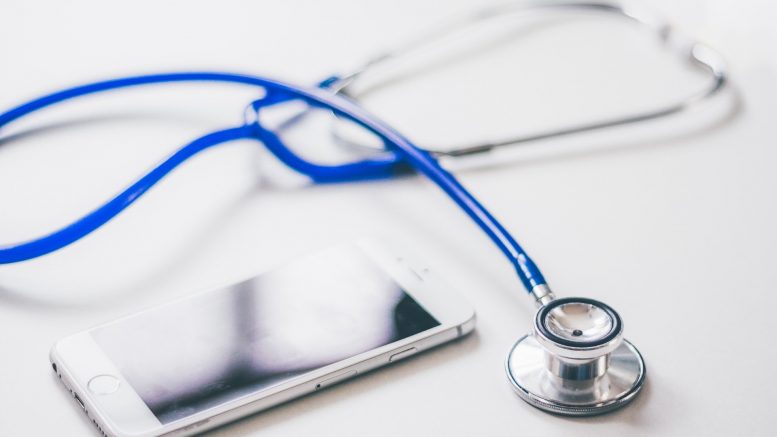Despite the digital transformation of the healthcare industry being talked about for many years now, the reality is that it was only progressing in fits and starts. Not only is the industry enormously complex, but there are also a lot of checks and balances put in place to stop changes being made that could adversely affect patient care levels or safety precautions. Although these checks and balances are important, they also stifled innovation in the sector for many years.
For years, the UK healthcare system has faced continuous pressure to treat more patients and reduce costs, but without negatively affecting patient outcomes. Such is the burden of the population of the current healthcare system though, that failing to innovate is what will mean patient care drops going forwards.
But the Covid pandemic has forced almost every part of the NHS and the organisations that support it to rely on more digital technologies. As the pandemic recedes, the healthcare industry has a rare chance to decide what its ‘new normal’ will be, implement what we’ve learnt during the pandemic, and make the most of new technologies to deliver on its priorities.
Virtual care is care
The most obvious change to the industry during Covid was the move to virtual appointments and care, sometimes called telehealth. Although we expect a return to many face-to-face services, as advocated by healthcare professionals and patient care groups, some remote appointments are almost certain to continue.
During the healthcare industry forum at OpenText World EMEA this year, Arielle Trzcinski, Principal Analyst at Forrester, reported that in 2021, up to a third of UK adult patients will leverage virtual healthcare visits, with mental health needs a key driver. Behavioural health, occupational therapy and chronic disease management are other good examples where virtual and hybrid care models can be applied.
Patient benefits of virtual appointments include time savings travelling to and from appointments, particularly in the case of specialists who may be located in major hospital hubs rather than local GP services. And the cost and time saving benefits to the healthcare professionals are huge.
This is not to say that virtual appointments are always the right way forward. Before presenting to a primary care provider (such as a GP’s receptionist) patients have been better supported by digital technologies in self-triage. In fact, the same Forrester survey found that 40% of consumers in the UK have used a self-triage system to know when and where to go for care during the pandemic. This means that face-to-face care is available for those who need it, but time and resources can be prioritised by providing other recommendations to those who either should go straight to secondary care, or who can be supported virtually.
For the UK health service to operationalise this ‘new normal’, it must begin to treat virtual care and self-triage as part of its main care delivery service model. Until now, virtual care in particular has too often been viewed as a separate service line from both a cost and a staffing point of view.
Prioritising prevention through data
One of the NHS’s greatest strengths is its size. It’s no accident that two of the most effective drugs that were found to help treat those in hospital with Covid were discovered through the RECOVERY trial because of the ability to do drug trials on a massive scale across the NHS.
However, when it comes to data sharing and management, the NHS’s size can work against it. The NHS is made up of hundreds of separate but linked organisations, and due to legacy IT systems and organisational structures, it’s often left to the patient to keep track of their information as they access various types of primary, secondary and community-based care services. But this approach means that each time a patient arrives at an appointment with a new healthcare professional, their notes have to be reviewed and their symptoms updated before decisions can be made about management. This needs to be flipped on its head, with a preventative approach to care taken when certain thresholds are reached, informed by an ‘always on’ approach to symptom monitoring.
Pulling this data together needs to be a priority. Artificial Intelligence (AI) can create more precise predictions about patient outcomes, by using data to inform algorithms which help make decisions about the patient experience. These AI-generated predictions will improve patient outcomes by helping healthcare practitioners act as soon as they receive insights on their patients’ conditions; creating a personalised, data-driven experience. It’s imperative that healthcare industry is able to use this type of technology to its advantage to cope with the Covid backlog, changing patient expectations, and increasing numbers of patients with long-term conditions due to our aging population.
Organisations should start small with simple use cases, and build trust from there with both healthcare professionals and patients. A good example of this is the NHSX’s recently announced plans to distribute AI-assisted home-testing kits for early detection of kidney disease to around 500,000 patients over the coming 3 years. This AI solution has the potential to save more than 11,000 lives, as well as the NHS at least £660m over five years.
The changing threat landscape
The rise in virtual care means more providers working from home and patients using their own personal technology to receive care. On top of this, the move to always-on monitoring, often called remote patient monitoring (RPM), means that there are a proliferation of devices linked to the network of a healthcare provider. Patient preference for ‘aging in place’, as well as all the evidence that shows that rehab and recovery at home is more effective than in hospital means that healthcare devices in the home are here to stay. All of these devices bring new security risks. This rapid change created an optimal opportunity for cybercriminals.
Having so many new endpoints has completely changed the landscape. AI has benefited the cyber threat ‘industry’, just as it has every other industry, and as such we are seeing automated attacks on the rise at the moment, particularly targeting private and public clouds with ransomware attacks, after a period of years where phishing was the principle vulnerability for the sector. There is now an increased focus on security and threat management in most healthcare organisations, and many technology professionals that I speak to in the sector say a significant portion of their budgets go on security technology.
It’s a tricky balance to strike for those charged with security. Patients don’t want to jump through security hoops for something simple like booking an appointment, but also expect healthcare providers, including the NHS to keep personal data safe. Sophisticated solutions are required to protect the patient experience while keeping everything secure, otherwise digitisation of the sector won’t get off the ground if it’s cumbersome to use.
Ultimately, although virtual care is care, and the power of data should absolutely be harnessed to empower patients and healthcare professionals alike, providing healthcare is a highly personal profession, and trust is key. That includes the trust a patient has when they are able to speak to their own GP, even if it’s done remotely. It also includes the trust in technology to improve care pathways, while keeping data safe. We are finally seeing sustained adoption in more digital healthcare thanks in part to some of the trust in these systems that has been built up during the pandemic. This is the perfect opportunity to continue the health service’s digital transformation.
By Scott Lundstrom, Senior Industry Marketing Strategist for Healthcare at OpenText





